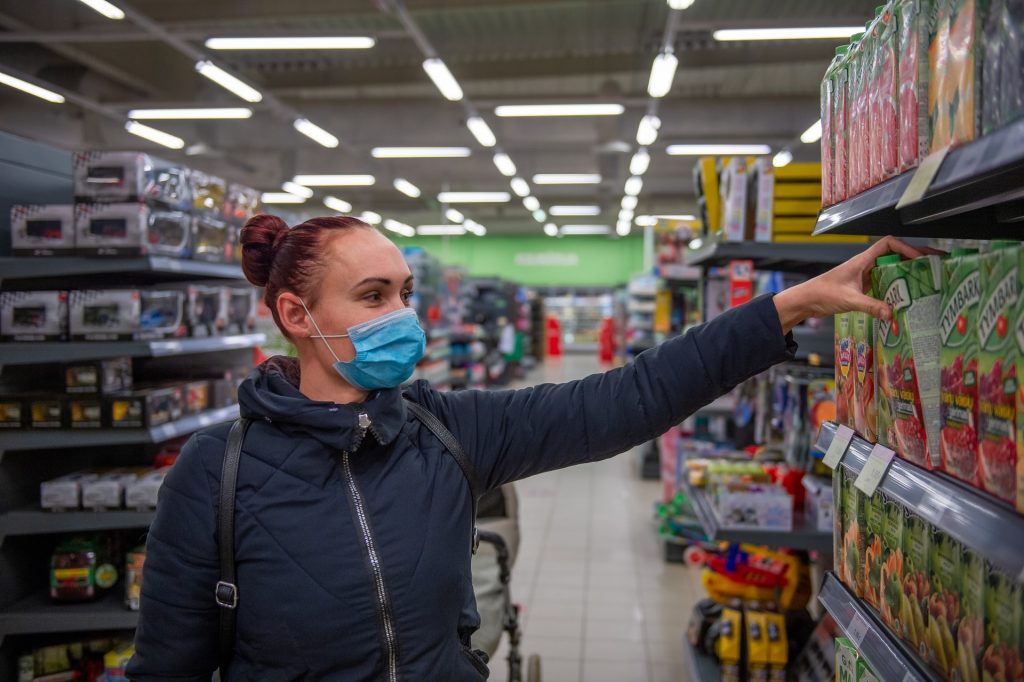Intro snippet
The COVID-19 pandemic introduced unexpected stresses on retail systems, creating many immediate challenges. Yet what is remarkable is the speed with which supply chain actors have been able to reorganise to ensure the continued availability of consumer goods, at least in the developed world. With the retail landscape set to shake up with consumer habits changing, the retailer must answer a key question: What does it take to reach your consumers during this pandemic?
How COVID Has Changed Online Retail
The COVID pandemic has decimated industries across the board. Are you a bricks-and-mortar non-food retailer? If so, initial research suggests you’ve had a revenue drop of about 17%. That’s a total of over £37 billion across the UK.
But, knowing you’re not alone doesn’t help when you’ve got bills to pay. Nor do promises of life returning to normal. Not when vaccine rollouts could extend well into 2021.
Additionally, indications are that consumer habits may have changed permanently. What do retailers need to know about new buying patterns? Is it possible to operate profitably in these uncertain times?
In this article, we take a closer look at the online retail landscape.
COVID has been a catalyst for online retail
By July last year, more than 85,000 businesses had launched online stores or joined online marketplaces. This partly explains why retail association IMRG reports that online sales grew by 36% in 2020. That’s a growth figure we haven’t seen in over 13 years.
And it accounts for overall retail sales falling by only .13%. (Although this is still the biggest decline in a quarter-century.) However, one needs to look a little closer at the online categories contributing to the growth;
- Electricals were up 90.8%, and
- Garden sales grew a massive 222.5%, but
- Online clothing only grew 3.2% (compared to a 25% drop in clothing retail overall), and
- Footwear declined by 5%.
Another category to take note of is the thriving pets industry. In the UK, animal shelters emptied as people sought furry company for lockdown. Pets at Home reports a revenue hike of 17.5% in 2020.
Platforms matter
Place as one of the P’s of marketing mix is more relevant than ever. Unless you make it easy for the consumer to purchase your product, you will lose sales to a competitor that does. Simply marketing and advertising online and expecting the consumer to purchase from a brick and mortar store isn’t going to work.
Yes, your marketing must reach your target audience where they are likely to spend their time (think social media, for example). The power lies in facilitating purchase on multiple channels and multiple devices.
Trends are coming out of the IMRG data. For starters, mobile sales grew by 73%! Then, single-channel vendors grew only 9.1% over the year. Whereas, multichannel retailers, those who sell their wares on multiple platforms, grew 57%.
The changes go deeper
Changes in online buying patterns go deeper than platform and category volumes, though. DownYourHighStreet, an online marketplace that supports UK brands, predicts the shift to online is permanent. They also observe the following;
- a drop in loyalty to brands,
- a shift to basics and value,
- a need for hygiene transparency.
Now is the time to change things up
To survive, retail requires a shift to multichannel, online markets – ideally those with mobile functionality.
Consumers stuck at home are spending less on clothing and more on home comforts. And with money being tight, they are going back to basics and demanding value and quality.
A shift to looking for local vendors is also apparent and could continue as small independent high street retailers begin to venture into the online space.
So there you have it, folks – your roadmap for 2021.





